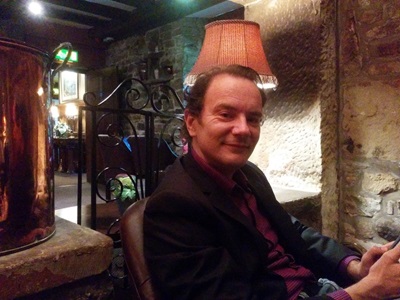Why do we like to touch some objects more than others?
Why do we like to touch some objects more than others?
Dr Ale Soranzo is an expert in experimental research methods and statistical analysis. These are critical tools for researching a host of questions about human behaviour in a controlled and scientific manner. Dr Ale Soranzo primarily works in visual cognition which involves the study of human visual attention, memory, and perception. His research has included exploring how people perceive famous artworks, including a study of Leonardo Da Vinci’s ‘La Bella Principessa’. He has enjoyed productive collaborations with colleagues in Art & Design.
A mutually beneficial collaboration
Dr Soranzo tells us, “The collaboration between psychology and design has been very fruitful. Design experts had knowledge about innovative objects and were able to build them. As a psychologist, I had the methodological expertise to help them find out about people’s aesthetic preferences. Our collaboration led to knowledge that will support designers in the future development of interactive objects”.
An example project: How can we design objects that people want to interact with?
Interactive Objects are designed to behave in particular ways when they are handled – for example, gaming controllers that vibrate, or children’s toys that light up or make noise when squeezed. When interactive objects are under development, it is important for designers to understand how people will react to them, and what might make objects more aesthetically appealing. This is where psychology comes in.
Setting off on the right foot
Dr Soranzo highlights the importance of being involved from the inception phase of the research to support the development of testable research questions. The team planned two linked studies. The first was an explorative qualitative study, and the second was an experimental study designed to actually measure people’s preferences and assess individual differences.
Study 1
Participants were asked to interact with a range of objects and consider which ones they liked or disliked and then provide an explanation. The accounts participants provided about their preferences were analysed thematically and adjectives (e.g. soft, warm, rough) were coded to determine the most common dimensions of preference. Seven main preference dimensions were identified.
As Dr Soranzo explains, “In this way, the dimensions of aesthetics we later explored were derived from our participants feedback rather than any assumptions of the researchers”.
Study 2
The second study systematically measured participant responses to each of the objects along the preference dimensions identified in study 1. Participants opened one box at a time and interacted with the object contained before rating each object across the seven dimensions identified in Study 1. In this way it was possible to examine how individual object properties and combinations of properties influenced ratings on each dimension. Data was analysed using rigorous statistical methods of analysis (ANOVAS, Q-Mode analysis).
Findings
The primary findings were that:
1. People prefer Interactive Objects over objects not exhibiting any behaviour.
2. People prefer vibrating, curved objects made in fabric. However, the size of the objects did not seem to have any effect on their aesthetic preferences.
3. People can be classified into two groups: those that base their aesthetic judgement on the object's behaviour only and those that take into consideration also the shape of the objects.
Publications
Petrelli D, Soranzo A, Ciolfi L. & Reidy J (2016) Exploring the Aesthetics of Tangible Interaction: Experiments on the Perception of Hybrid Objects. Proceedings of the TEI'16: Tenth International Conference on Tangible, Embedded, and Embodied Interaction. ACM, New York, USA Publisher, 100-108. https://dx.doi.org/10.1145/2839462.2839478.
Soranzo A, Petrelli D Ciolfi L & Reidy J (2018) On the perceptual aesthetics of interactive objects. Quarterly Journal of Experimental Psychology, 71(12), 2586–2602. https://doi.org/10.1177/1747021817749228 ISSN: 1747-0218
Public engagement
Article published in the fastcodesign website

